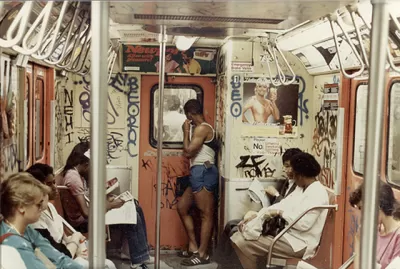New research reveals the regional and national trends of transit ridership—where transit is still a viable option and where travelers have increasingly relied on automobiles.

Yonah Freemark summarizes the findings of new research about historic trends in transit ridership:
Freemark created a database of commuting patterns in the U.S. metropolitan areas between 1970 and 2019 to complete the research. As noted by Freemark, the trends are driven by residential and economic growth outside of the largest U.S. cities:
According to Freemark, "Major regions in the South and Midwest have seen declining transit shares of the nation’s transit commuters." Cities like San Francisco, Seattle, Los Angeles, Boston, and Washington, D.C. actually have more commuter traveling by transit now than they did in the 1970s.
Freemark also ties the transit ridership data to economic growth (i.e., venture capital investment) and also mines the trend data for lessons about how to get more people on transit.
An article by Tony Frangie Mawad for Bloomberg CityLab picked up the news of Freemark's research.

Planetizen Federal Action Tracker
A weekly monitor of how Trump’s orders and actions are impacting planners and planning in America.

Maui's Vacation Rental Debate Turns Ugly
Verbal attacks, misinformation campaigns and fistfights plague a high-stakes debate to convert thousands of vacation rentals into long-term housing.

San Francisco Suspends Traffic Calming Amidst Record Deaths
Citing “a challenging fiscal landscape,” the city will cease the program on the heels of 42 traffic deaths, including 24 pedestrians.

Defunct Pittsburgh Power Plant to Become Residential Tower
A decommissioned steam heat plant will be redeveloped into almost 100 affordable housing units.

Trump Prompts Restructuring of Transportation Research Board in “Unprecedented Overreach”
The TRB has eliminated more than half of its committees including those focused on climate, equity, and cities.

Amtrak Rolls Out New Orleans to Alabama “Mardi Gras” Train
The new service will operate morning and evening departures between Mobile and New Orleans.
Urban Design for Planners 1: Software Tools
This six-course series explores essential urban design concepts using open source software and equips planners with the tools they need to participate fully in the urban design process.
Planning for Universal Design
Learn the tools for implementing Universal Design in planning regulations.
Heyer Gruel & Associates PA
JM Goldson LLC
Custer County Colorado
City of Camden Redevelopment Agency
City of Astoria
Transportation Research & Education Center (TREC) at Portland State University
Jefferson Parish Government
Camden Redevelopment Agency
City of Claremont


























